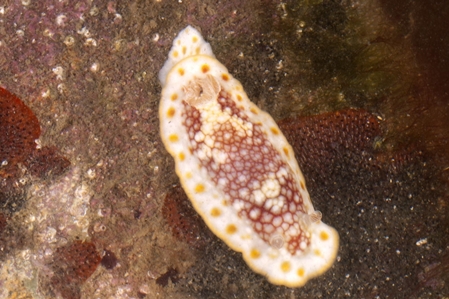General Description
Body shape slug-like with gill structures visible as a single cluster on back of the animal. Pattern includes shades or colours of white, red, orange and/or yellow. Animal up to about 4 cm.
Biology
This is a tropical/warm-temperate species that recently has extended its range through Bass Strait. It feeds on sponges.
Habitat
Subtidal and occasionally intertidal, to depth of 30 m.
Coastal shores
Reefs
Distribution guide
Indo-Pacific tropical and warm temperate seas. Australia, excluding Tasmania.
Species Group
Nudibranchs and allies › Nudibranchs
Depth
Shore (0-1 m)
Shallow (1-30 m)
Water Column
Max Size
4 cm
Diet
Carnivore
Commercial Species
No
Global Dispersal
Recorded in Australia
Identify
Conservation Status
- DSE Advisory List : Not listed
- EPBC Act 1999 : Not listed
- IUCN Red List : Not listed





